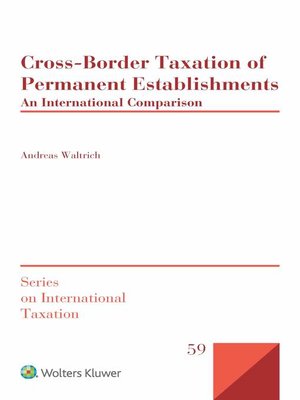Cross-Border Taxation of Permanent Establishments
ebook ∣ An International Comparison · Series on International Taxation
By Andreas Waltrich

Sign up to save your library
With an OverDrive account, you can save your favorite libraries for at-a-glance information about availability. Find out more about OverDrive accounts.
Find this title in Libby, the library reading app by OverDrive.



Search for a digital library with this title
Title found at these libraries:
| Library Name | Distance |
|---|---|
| Loading... |
The permanent establishment (PE) is a legal form of cross-border direct investment whereby a business presence is maintained as an integral part of the foreign investor. Due to the growing intensity and complexity of international business relations, the PE defi¬nition and the allocation of profi¬ts between head units and PEs have become highly contentious, especially from the perspectives of the major emerging economies of the BRIC countries (Brazil, Russia, India, and China). Unsurprisingly, the potential for tax avoidance and the scrutiny of tax authorities have increased enormously. Against this background, this work illustrates and compares the OECD Model Tax Convention with country-specifi¬c source taxation rules, focusing on possible tax system changes and offering reform proposals.
Emphasizing the taxable implications of the various rules upon country-speci¬fic PE concepts, the author's treatment covers such issues and topics as the following:
The author uses simulated cross-border national and treaty cases to highlight qualifi¬cation conflicts, thus reinforcing his detailed discussion of source taxation rules of business profi¬ts and relevant case law in Germany, the United States, and the BRIC states. There is also a checklist detailing how companies can avoid unintentionally setting up a PE.
The author's deeply informed proposals provide much-needed guiding tax criteria and open the way to greater feasibility and transparency in PE taxation. Because the defi¬nition of PEs has enlarged and the treatment of profi¬t allocation has become more complex, the clari¬fication of the PE concept presented in this book is of inestimable importance for lawyers, of¬ficials, policymakers, and academics concerned with international business taxation in any jurisdiction.







